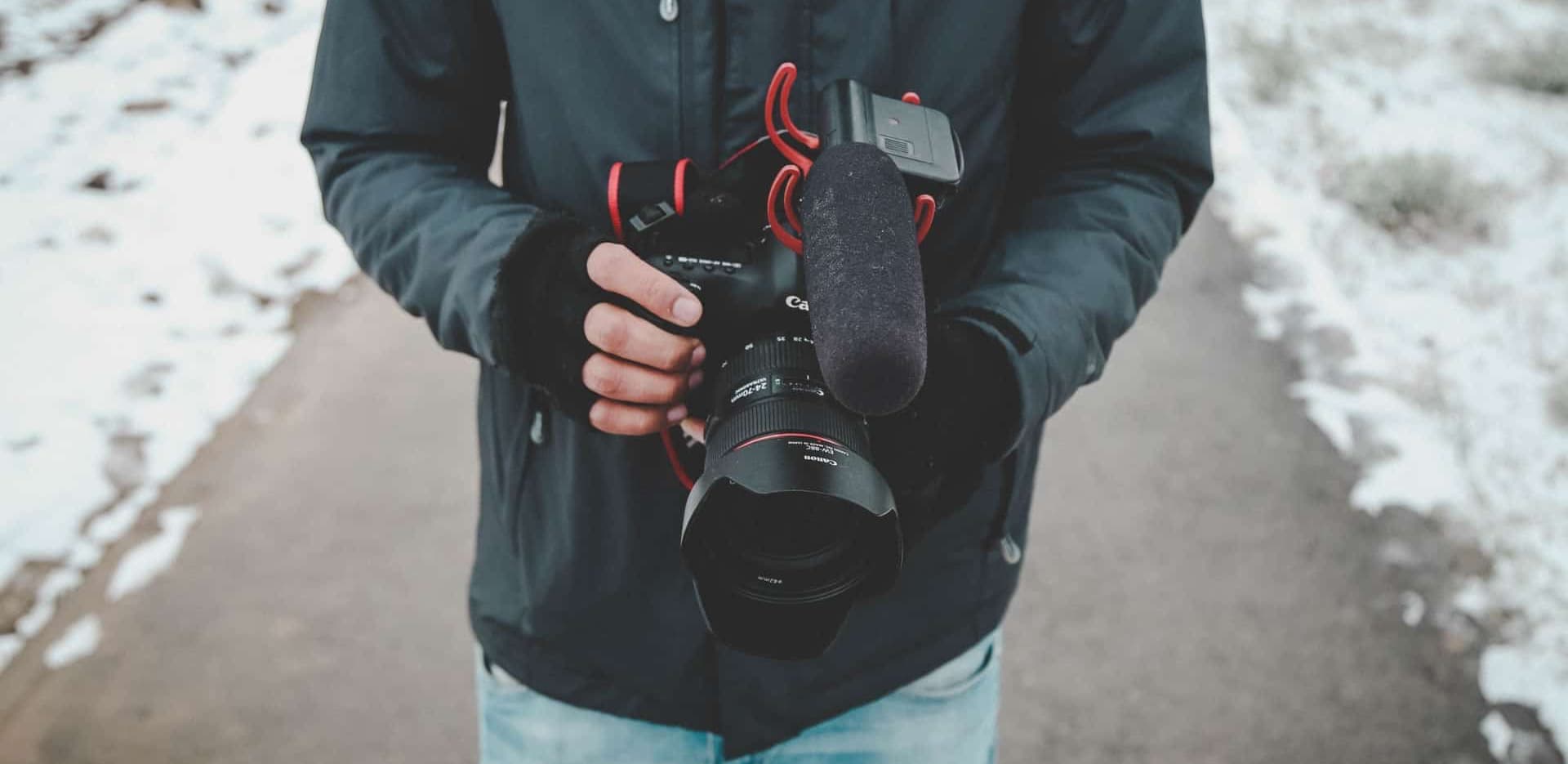One of the questions that we get most from our camera audience is: what is the best DSLR for video? In 2019 is not as easy to answer due to the influx of mirrorless competitors entering the space and capturing the market share from DSLR cameras.
If you don't have time to read this guide, we believe the top DSLR for video is the Canon 1DX Mark II. We chose this camera due to its competitive features mixed with a robust design.
Following the 1DX Mark II is Canon's 5D Mark IV which comes in at a much lower price. The 5D Mark IV offers good video features but doesn't have as high of specs as its older DSLR sibling.
Those who are tight on money, the best budget DSLR for video is going to be Canon's 80D. This DSLR is a good choice for YouTubers due to its portability and has excellent autofocus for a reasonable cost.
If you are cool with ditching a DSLR for mirrorless technology, you can get more competitive features and smaller design for a cheaper price. Those interested in the best mirrorless for video should check out the Blackmagic Pocket Cinema Camera 4K.
Editor's Choice
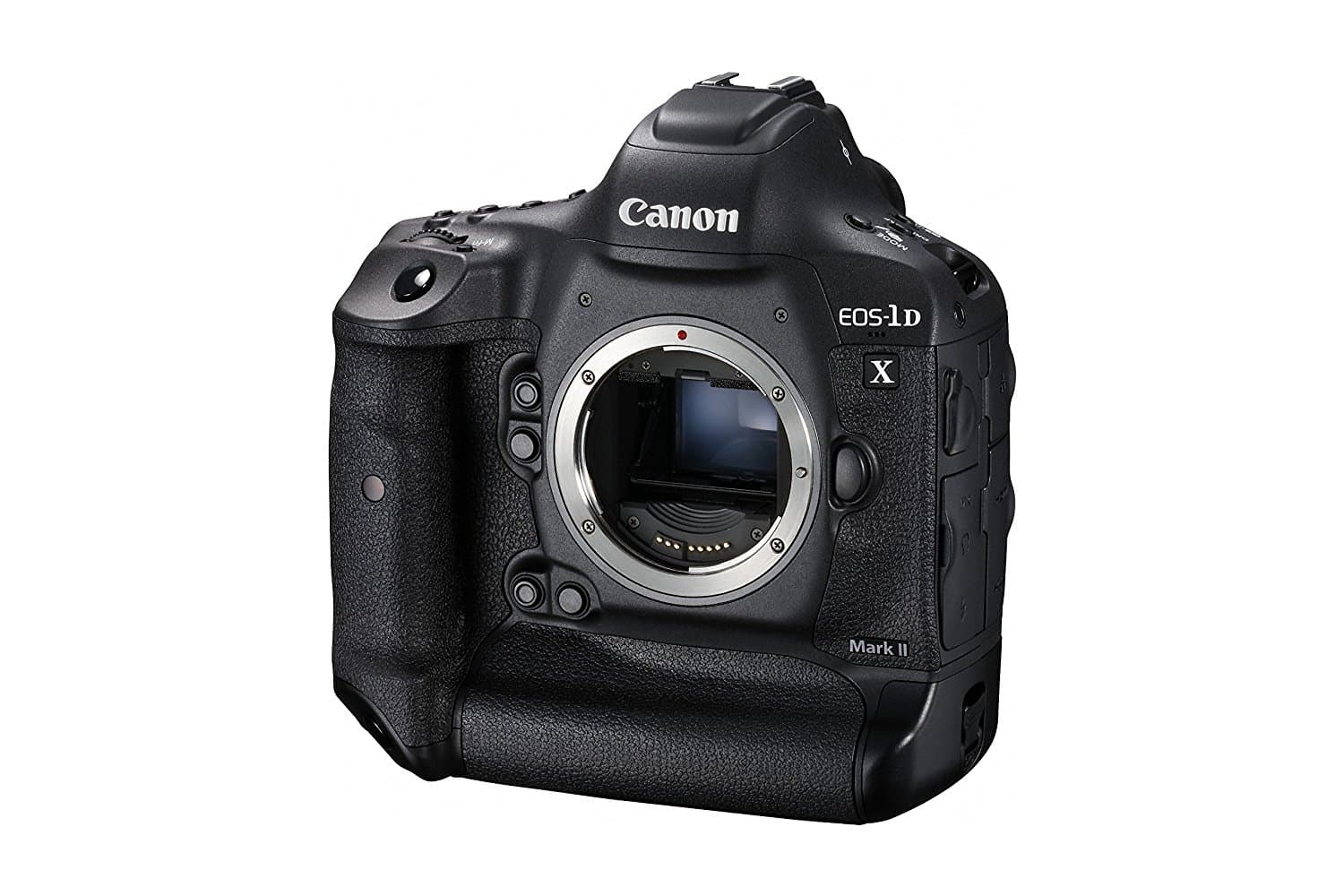
Canon 1DX Mark II
A powerful DSLR camera that is good for both stills and video, the 1DX Mark II offers it all at a premium price.
The 1DX Mark II is a favorite among professional photographers, but the video capabilities are competitive for a DSLR camera. With high-end features like C4K video up to 60fps, touchscreen dual-pixel CMOS autofocus and solid low-light performance, the 1DX Mark II is the top DSLR for filmmaking, if you can stomach the high cost.
$1,899.00 at Amazon
$5,499.00 from B&H*
*Pricing as of 5/29/19
Runner-Up
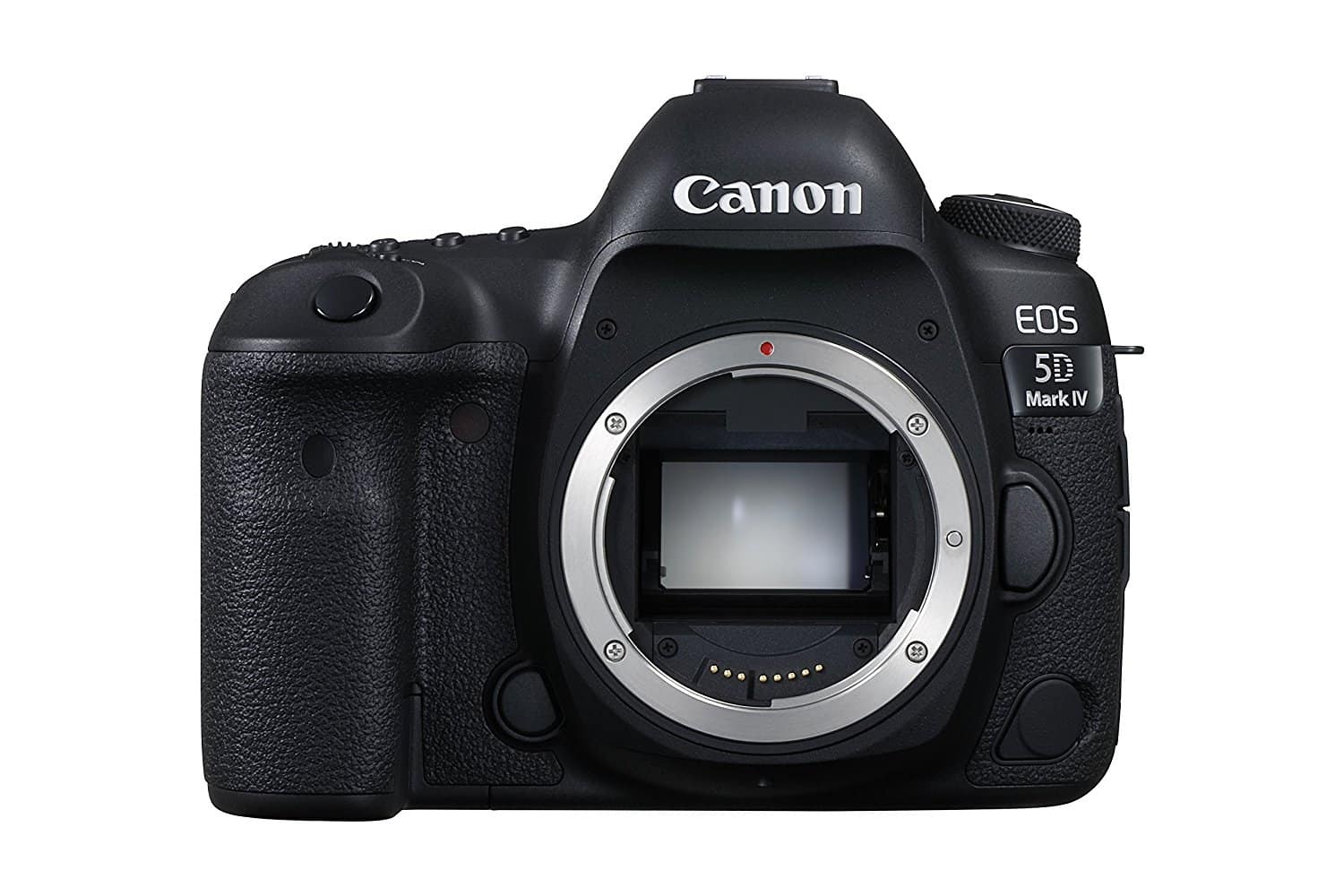
Canon 5D Mark IV
The successor to the company's 5D Mark III which had been regarded as the best DSLR for filmmaking in the past.
A step down from the 1DX Mark II, Canon's 5D Mark III offers good video performance. This camera brings several new features to their 5D line including 4K video, dual-pixel AF and touch screen support.
$1,799.00 at Amazon
$2,799.00 from B&H*
*Pricing as of 5/29/19
Best Budget DSLR For Video
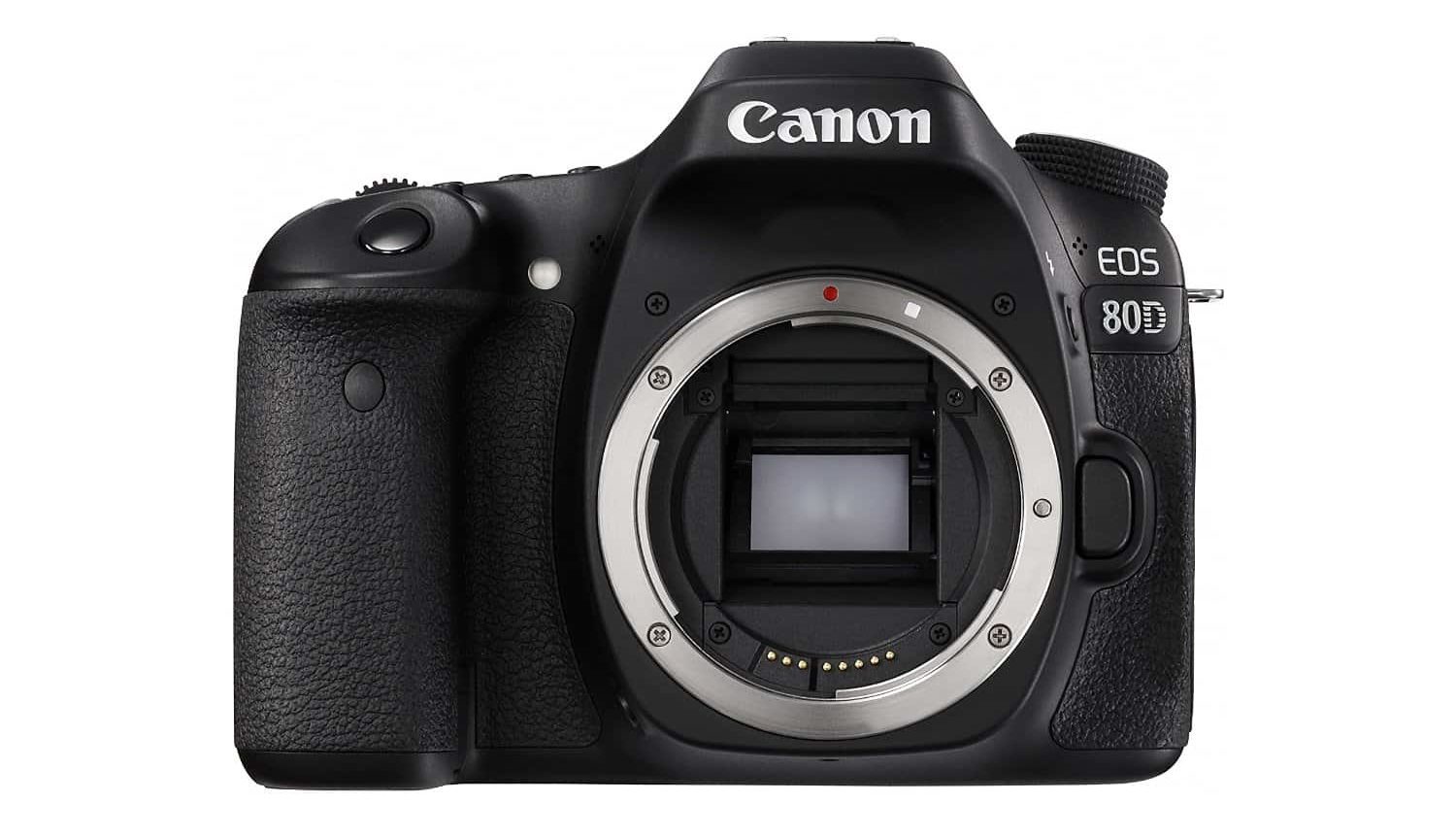
Canon 80D
Made popular by Casey Neistat, the 80D is an affordable DSLR with HD video that is a good fit for vlogging.
The Canon 80D is a good option for a budget filmmaker or YouTuber. This DSLR offers competitive video specs while maintaining portability and a small form-factor. This is the successor to the 70D which was the first budget DSLR from Canon to use their best in class dual-pixel AF system.
$1,099.00 at Amazon
$899.00 from B&H*
*Pricing as of 5/29/19
Best Mirrorless Camera For Video
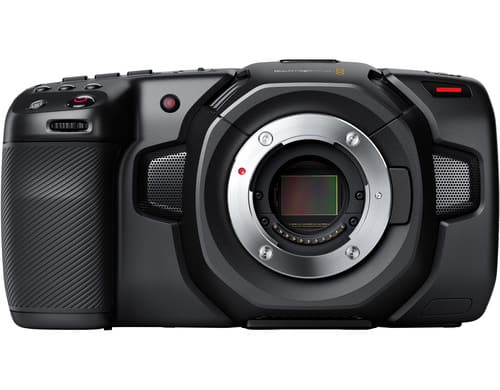
Blackmagic Design Pocket Cinema Camera 4K
A mirrorless 4K camera that impresses in low-light, high-frame rate, RAW shooting and picture quality.
The Pocket Cinema Camera 4K from Blackmagic Design offers incredible features for the price. The form-factor is a bit less friendly to handle and rig than a DSLR for filmmaking. This is the only mirrorless or DSLR camera on this list to offer RAW video support which makes editing color in post an easier experience.
*Pricing as of 5/29/19
TheTechReviewer's content is user-supported through limited display advertising and some use of affiliate offers with reputable retailers which may earn us a small commission. Rest assured, integrity is and will always remain our top priority.
Article Shortcuts (Jump To A Section)
Should You Buy A DSLR Or A Mirrorless Camera?
Sensor Size: Full Frame vs. APS-C vs. Micro Four-Thirds
Low Budget? Consider Buying A Used Camera
Renting – Temporary Access To Film With The Best Gear
Comparing The Top DSLR Cameras For Filmmaking
Best DSLR For Video (2019)
Final Thoughts & Guide Summary
In the rest of this article, we'll do our best to cover the top DSLRs for shooting video. We will include several mirrorless options to consider when looking for a new video camera. Remember, everyone's needs are different. The right camera for one might be a different DSLR for another depending on their shooting style, video requirements or budget.
Buying a DSLR for shooting video can be a big investment for many and often requires a lot of research before pulling the trigger. We understand you likely have a lot of concerns which we cover throughout this guide.
If you finish this article and still have questions about DSLR filmmaking then use the comments section below. We will do our best to provide an answer or any helpful advice as soon as possible.
Should You Buy A DSLR Or A Mirrorless Camera?
The DSLR versus mirrorless debate had only begun in the past few years, but it is as fierce as the iPhone/Android or PC/Mac rivalry with no clear winner.
DSLR stands for the digital single-lens reflex camera. It is the traditional digital camera technology that evolved from 35mm SLR film cameras. A DSLR uses a mirror inside the camera body to reflect light coming through the lens up to the prism and then into the viewfinder for your shot preview. Once the shutter button is pressed, the mirror flips the shutter open to let light fall onto the image sensor to capture a resulting image.
A mirrorless design has light pass through the lens straight onto the image sensor (skipping any mirror components). This allows the user to see exactly what the camera is seeing through electronic signals sent to the back LCD and viewfinder.
Here's a good video by Sony further showcasing the differences between DSLRs and mirrorless cameras:
https://www.youtube.com/watch?v=4ezKmawMEUs
Advantages Of DSLRs For Video
- Better battery life as DSLR bodies are larger allowing bigger batteries and an optical viewfinder doesn't need power
- Better autofocus as most DSLRs offer phase detection such as the dual-pixel AF found on some Canon models which is the top performing system
Advantages Of Mirrorless For Video
- Smaller, lighter form-factor as the extra room isn't required for a mirror system
- Better image quality/less noise in low-light conditions
- Electronic viewfinders show exactly what the sensor sees regardless of lighting conditions.
- Offer native monitoring functionality (zebras, focus peaking, sensor grid, etc.)
- Ability to use a broad range of lenses via third-party adapters like the Metabones due to the flange distance
- Sensor-based image stabilization (can be used in conjunction with lens stabilization)
- More common for models to offer recording in 4K resolution
- More likely to have modes with higher frames per second for slow-motion (sometimes via variable frame rate modes)
- Greater value as mirrorless models are often cheaper while offering more features
Now seeing the advantages laid out in a matter like this, you should be able to see why so many DSLR video shooters are switching to the mirrorless market.
Does that mean you shouldn't buy a new DSLR for shooting video? Absolutely not. However, it is important to understand the video market to help make the best decision on which DSLR or mirrorless to buy for your filmmaking needs.
Sensor Size: Full Frame vs. APS-C vs. Micro Four-Thirds
Both DSLR and mirrorless models offer three primary sensor sizes: Full Frame, APS-C, and Micro Four Thirds. With such a dramatic difference in size between sensors, the recorded image is affected in several ways.
While there are other variables that come into play, here is a general overview of sensor sizes and their common traits:
- Full frame sensors – the biggest sensor you'll see in a DSLR or mirrorless which lets in the most light (best in low light conditions). From a pre-defined distance, it will offer the widest field of view and the greatest depth of field. These sensors are often used in the higher-end DSLRs and mirrorless models as they are the most expensive to produce. Due to the increased size of the sensor, DSLR and mirrorless models that use these result in larger camera bodies.
- APS-C sensors – the middle of the road sensor that is most common in DSLRs and only present in some mirrorless models due to their lower cost to produce. These smaller sensors will let in less light (mediocre in low light conditions). From a pre-defined distance, it will display a narrower field of view (usually around 1.5x crop factor) and weaker depth of field.
- Micro four thirds sensors – the smallest sensor size offered which is exclusive to mirrorless cameras. It is the smallest of the three sensors meaning it will get the least amount of light (weakest performance in low light conditions). From a pre-defined distance, you'll get the smallest field of view (usually a 2x crop factor) and the least depth of field. These sensors are the cheapest to produce so you'll often find them on lower end models despite their competitive features.
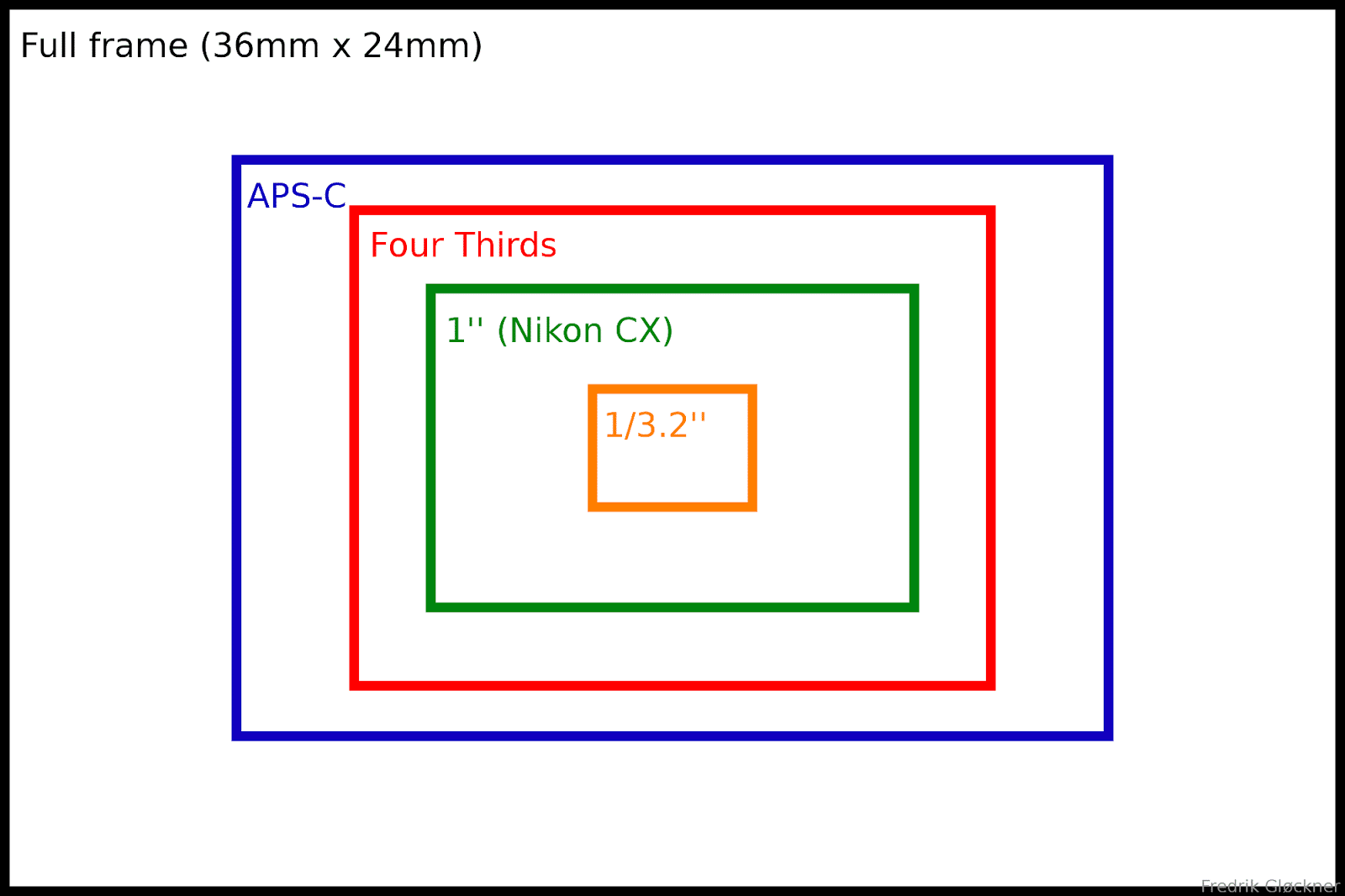
An important to note about APS-C and micro four thirds mirrorless cameras as opposed to DSLRs. Despite the smaller sensor size, you have the option to buy a speedbooster. This accessory provides magnification to optically enlarge the sensor. The result lets in more light, widens the field of view and increases depth of field often without compromising image quality.
This means you can turn an APS-C model to perform like a full-frame sensor or a micro four-thirds to perform as an APS-C or full-frame sensor. The primary downside to this approach is that you'll have to have the extra cash to invest in a speedbooster which usually cost at least $500 . Then you'll need to use DSLR lenses (of which you might already own like we did). However, mirrorless models are often cheaper than comparable DSLRs so the price difference could even out.
Low Budget? Consider Buying A Used Camera
There are a lot of big questions consumers must make when they are looking to buy a new DSLR for video, and the answers depend on many variables:
- Do you have the budget to buy any of the above models new? (don't forget the cost of lenses, spare batteries, recording media, lighting & rigging gear) If yes, then buy new.
- Are you okay with spending a large sum on a used or pre-owned model that may already show visible wear or markings? If no, then buy new.
- Could you afford potential repair costs associated with a pre-owned camera that is likely out of the original warranty? If no, then buy new.
Over the course of my filmmaking career, I've purchased both new and used DSLR/mirrorless camera models. My decision to which condition I went through with has always been situational.
I have nothing against buying used and have done so on many occasions in the past, but if I opt to go down this route, I always make sure to do my homework. For any used camera, I make sure to understand the exact condition (with pictures) before purchasing so there are no surprises upon arrival.
When looking for deals on a used mirrorless or dslr video camera, I always check the following websites:
- B&H Photo (Used Department) – one of the biggest camera retailers that have great deals on pre-owned cameras
- Amazon (Used) – beyond selling new cameras, Amazon also allows third-party sellers to sell used cameras
- eBay – one of the largest online marketplaces for used goods from individual sellers
- BorrowLenses – one of the best places to rent a DSLR or mirrorless camera, but often sell off older rental units with a lot of life left in them
- Adorama (Used) – another big camera retailer that lists used camera deals often
- Craigslist – the biggest risk, but can potentially score a great deal locally
Finding a good deal on a used camera is all about timing. You'll find plenty of used models in good condition late into the lifespan of the product. A newer camera model will have less or even zero pre-owned units available.
Keep in mind, there is always a bigger risk in buying a used DSLR or mirrorless camera off the internet. When done right, it can pay off to the tune of hundreds or even thousands off retail if you can score a reputable deal. Remember these savings can be used for other expenses like lighting, an external microphone or another video recorder.
Renting – Temporary Access To The Best DSLRs For Shooting Video
For those who may have run the numbers and realized you can't afford any of the DSLRs on this list yet. You do have another option as renting a DSLR for video might be a more reasonable option for your needs.
Much like a car rental, camera or lens rentals allow you access to the DSLR camera to get the job done. This avoids the worry about longtime payments, warranty issues and maintenance costs.
Depending on your needs and budget, there are plenty of DSLR or mirrorless cameras available to rent. Rental periods can be as short as three days and as long as 14 days though the price will rise the longer that you rent the DSLR camera.
For our DSLR and camera gear rentals, we rely on BorrowLenses. From our experience, they offer the best selection, pricing and customer support in the business.
Browse BorrowLenses's Rental Selection
Comparing The Top DSLR & Mirrorless Cameras For Film
Best DSLR For Video

Canon 1DX Mark II
Pros
- Good for capturing both photos and video
- Battery life is excellent
- Shoot 4K video up to 60fps and 1080P video up to 120fps
- Offers the best AF for video shooting (Dual-Pixel)
- Built to be rugged enough to survive years of use and all weather conditions
Cons
- Very expensive DSLR camera
- Bulkier and heavier than most DSLRs
- You'll need to buy CFast cards to store your video which is an expensive additional cost
- MotionJPEG (required for 4K) is a real burden to work with in a video editing software and to store on your hard drive
The latest and best high-end DSLR from Canon which replaces their original 1DX. Designed for sports or wildlife photographers, the 1DX Mark II now brings a lot of video capabilities to the table.
The full-frame sensor is one of the best Canon offers with the greatest sensitivity (good for low-light). The 20.2 MP sensor offers enough resolution to shoot 4K video at up to 60 frames per second. The DSLR's rear touch screen and dual-pixel autofocus make pulling focus and tracking moving subjects a breeze. Canon's color science is notorious for offering the best accuracy without the need to tweak much in post.
The 1DX Mark II is built like a tank for use in even the most grueling conditions with a durable and weatherproof construction. It is the largest DSLR camera body on this list but is still suitable for use on most video rigs and gimbals. The large size allows it to shoot high frame rate C4K video without overheating and houses dual batteries for long battery life.
Shooting 4K video with a Canon DSLR requires Motion JPEG. This is a format that each still image is compressed as a single JPEG image. While this retains excellent video quality, the resulting file is cumbersome. It can become a hassle to work with these massive files in your video editing software or store on your hard drive.

Canon 5D Mark IV
Pros
- Smaller & more manageable DSLR body compared to the 1DX Mark II
- 4K video recording up to 30fps and 1080P video up to 60fps
- Offers the best in class AF system (Dual Pixel)
- Supports both CF and SD cards for storing video files
- 30.4MP full-frame sensor makes it good for photography as well video
Cons
- Battery life isn't as good as the 1DX Mark II
- Less slow-motion video options than the 1DX Mark II
- Still suffers from the same MotionJPEG format when shooting 4K video
Canon's 5D Mark lineup has always been a flagship DSLR model for the company. Their 5D Mark II paved the way for DSLR filmmaking, especially after the release of Magic Lantern. The 5D line has been known for its large, durable design with a full-frame sensor and solid low-light capabilities.
While the transition from Canon's 5D Mark II to Mark III wasn't all that big, the Mark IV added some significant changes. This is likely in an attempt to remain relevant as Canon's DSLR market share dwindles due to the mirrorless competition.
This latest addition to their 5D line-up is their best yet. Sporting a 30.4MP Full-Frame CMOS sensor and DIGIC 6+ processor, you can shoot Cinema 4K video up to 30 fps and 1080P FHD video up to 60fps.
Similar to their 1DX, Canon's 5D Mark IV DSLR has adopted the use of Canon's stellar dual-pixel autofocus technology. This provides best in its class autofocus for video shooters. With the introduction of a rear touchscreen display, you can now rack focus from one subject to another or lock your focus with ease.
Unfortunately, the 4K video shooting capabilities are again locked into MotionJPEG. While this format looks great in the resulting video image, it is a real pain to deal with in post-production.
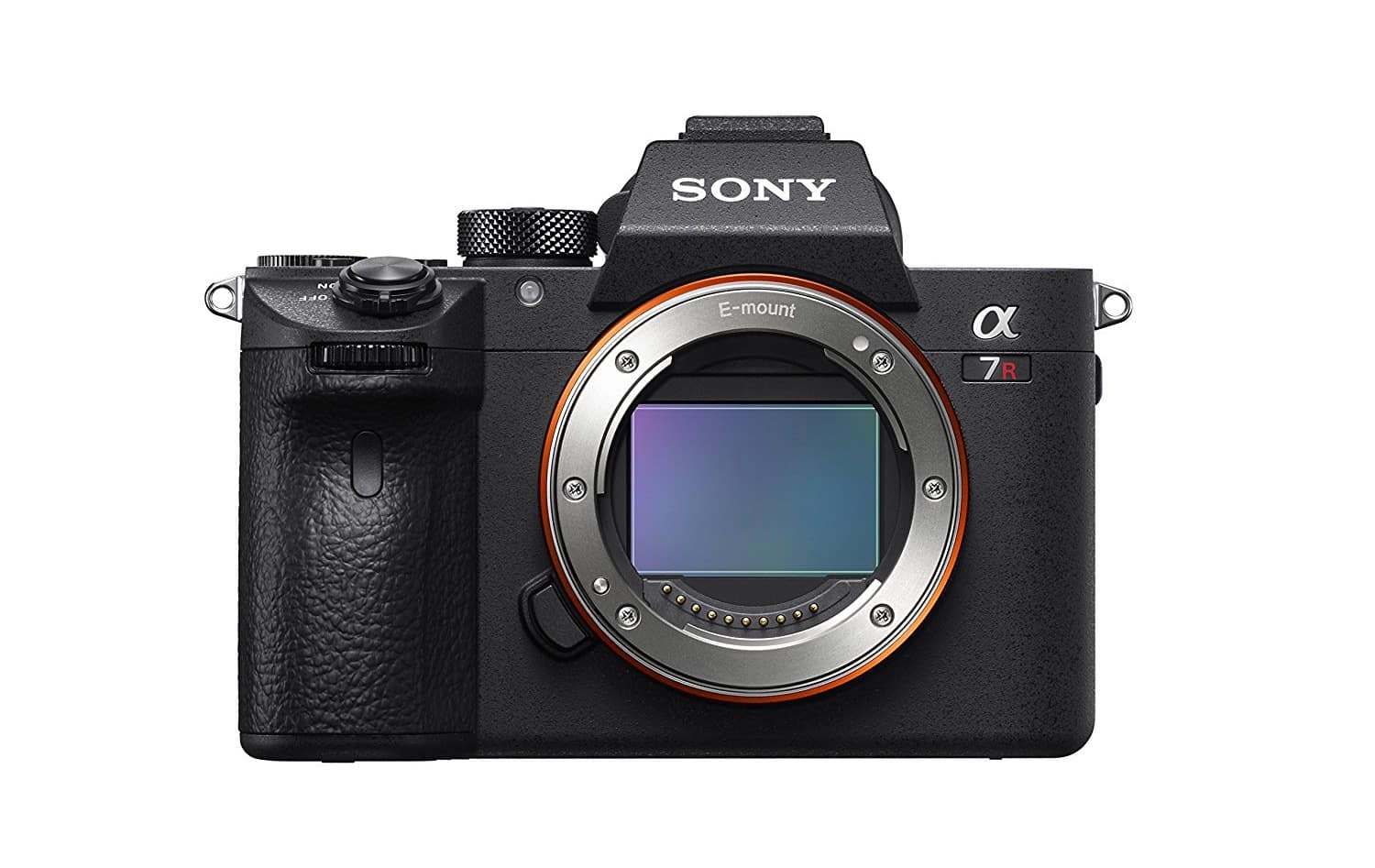
Sony A7RIII
Pros
- Smaller, sleeker form-factor
- Can shoot 4K HDR video up to 30fps and 1080P video up to 120fps
- Has 5-axis image stabilization built-in allowing smoother video capture
- 42.4MP sensor is good for high-resolution photography so its a great hybrid camera
- Offering flat video profiles like S-Log 3 and HLG for easier color grading in post
Cons
- Battery life isn't as good as the DSLR competition
- Pixel-binning is an issue when shooting 4K at full-frame, but APS-C mode solves this
- Video autofocus isn't as good as Canon's Dual Pixel found on their DSLRs
One of the newest mirrorless models to the Sony Alpha line-up and successor to the a7RII which was previously included in this guide. The third iteration of A7R offers stellar improvements over the previous generations for both photos and video.
Focusing on the video aspects, the sensor technology has remained the same. However, you get an updated Bionz X processor that is capable of writing data almost 2 times faster than the previous model. There 425 contrast detection AF points on the Mark III compared to the II meaning this will focus better, but not as good as a Canon DSLR with Dual Pixel AF.
The EVF has also been improved to a 3686k-dot resolution (previously 2359K-dot). There is also a bump in the rear LCD resolution from 1229k-dot up to 1440k-dot. Native ISO has jumped up to 32,000 ISO which offers good low-light shooting. Sony added another SD card slot for simultaneous backup recording or to automatic switching.
The a7RIII can now shoot 120fps at FHD and also benefits from access to Sony's latest flat picture profiles like S-Log 3 and HLG (Hybrid Log-Gamma). Battery life has also been improved on this model thanks to the new processor that is more efficient.
One of the benefits of mirrorless camera such as this is the ability to buy a Metabones adapter. This allows the use the best Canon L and Sigma ART series glass without having the hassle of selling and rebuying your existing lens kit for Sony mount.
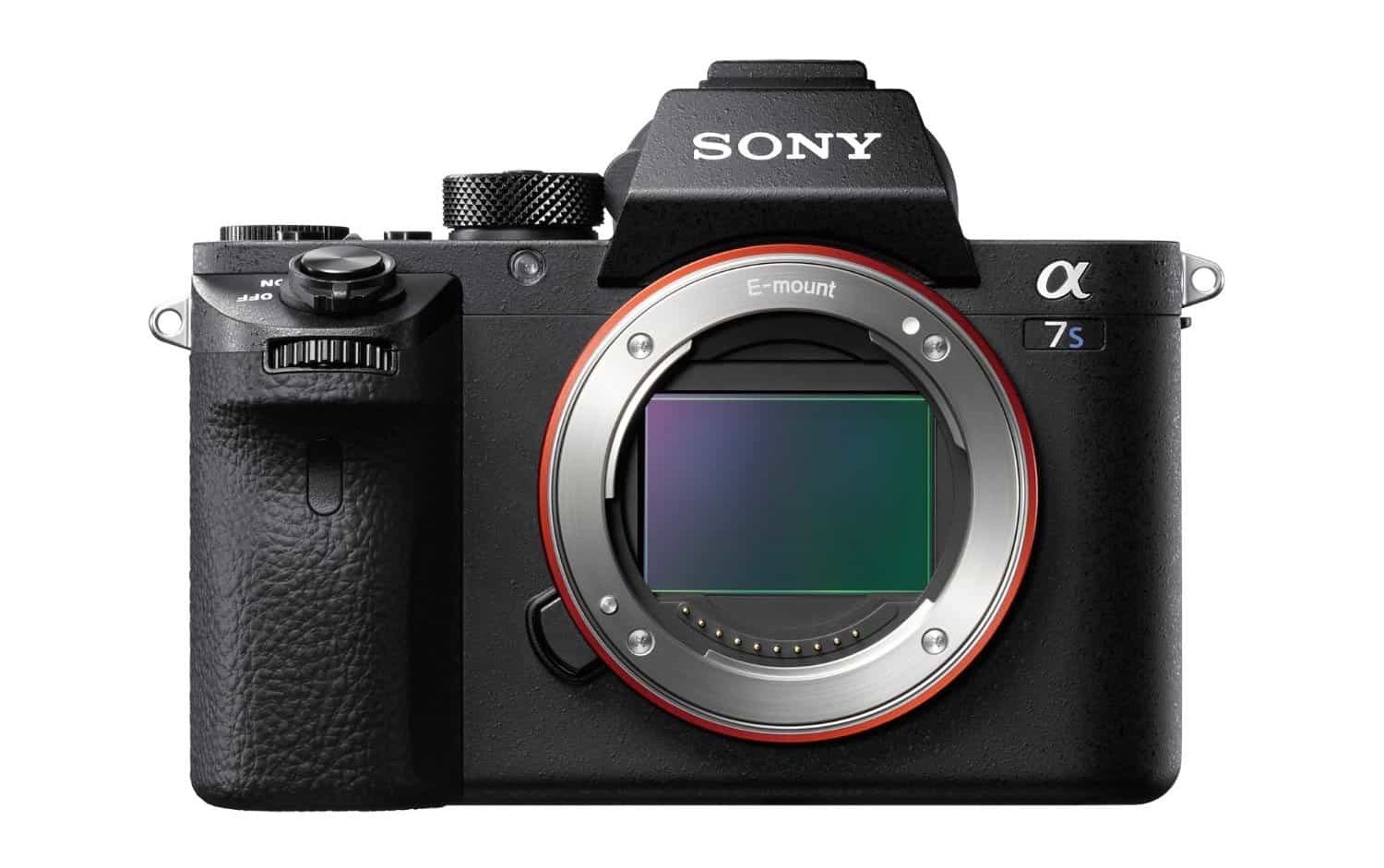
Sony a7SII
Pros
- The best low-light video performance of any DSLR or mirrorless camera
- Offers flat video profiles such as S-Log3 Gamma
- Can shoot 4K 30fps and 1080P video up to 120p
- Offers integrated 5-axis image stabilization
Cons
- Becoming outdated in today's standards (Sony should be releasing an a7SIII soon)
- Cannot shoot 4K video in APS-C mode due to the small amount pixels in the sensor.
Unlike the a7RIII, the a7SII was designed with video shooters in mind. While both models use full-frame sensors, the one found on the a7SII has only 12.2 MP. This decrease in pixels helps it achieve less noise in low-light conditions. It also allows for better video performance while using the entire full-frame sensor coupled with the crazy wide iso range (100-409600 ISO)
The a7SII does offer 5-axis image stabilization the sensor, so you are getting the very best video tech packed into this mirrorless body. If you are shooting video on the a7SII, you'll have to stick to full frame unlike the a7RII's preferred APS-C (crop) mode. This is because the a7SII doesn't have enough pixels on the sensor to shoot 4K while in APS-C mode.
The a7SII it can shoot FHD 1080P at up to 120 frames per second. While this is a huge advantage for slow-motion shooters, the downside is that in this mode you are stuck with a 2.2x crop. High frame rate files will automatically be output in 5x slo-mo in a 24fps clip or 4x slo-mo in a 30fps clip.
Another great aspect about the a7SII is the ability to shoot in S-Gamut3.Cine/S-Log3 which is Sony's logarithmic (flat) picture profile. This achieves the best dynamic range and latitude for video in both the shadows and the highlights. With S-Log3, you'll need to learn or know how to properly expose and correct the image in post-production.
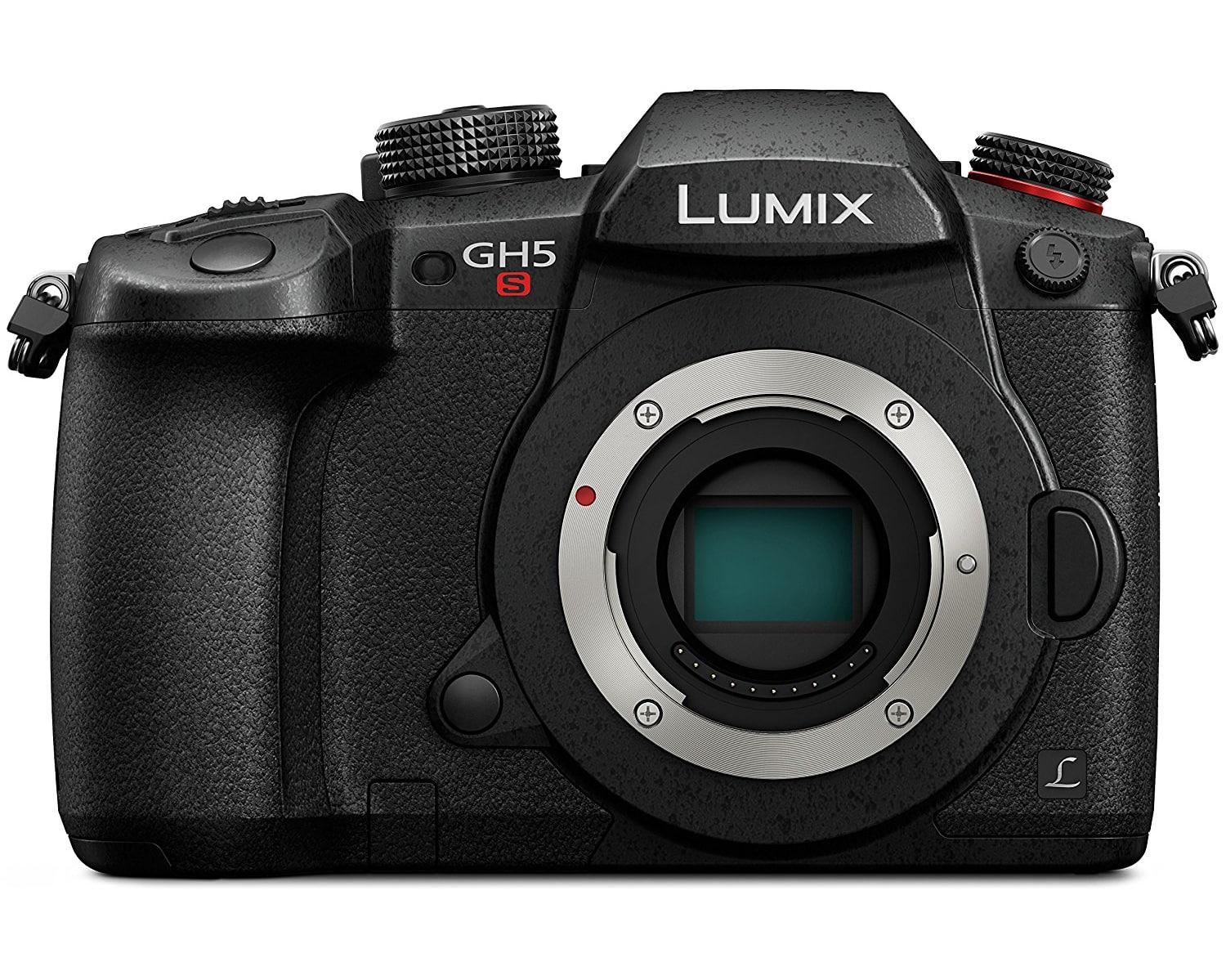
Panasonic GH5s
Pros
- The best low light video performance of any Panasonic mirrorless camera
- Can shoot 60fps video in both 4K and C4K with 240fps in 180P.
- Includes video profiles like V-Log L and HDR Hybrid Log Gammas for free
- Micro four-thirds lenses are cheaper or you can use a speedbooster to increase the crop factor
Cons
- Does not include 5-axis stabilization
- Micro four-thirds sensor has the largest crop factor
When we first posted this guide, we included the base GH5 in this spot. Since then Panasonic has released a newer model dubbed the ‘GH5s' which even more suited for video. By dropping down the megapixels of the sensor, the GH5s is the best of the Panasonic cameras in low-light with dual native ISOs of 400 and 2500.
The slow-motion capabilities have also increased from 180fps in VFR modes up to 240fps in VFR (variable frame rate). The GH5 could only shoot 60fps in 4K, but could only shoot up to 24fps in Cinema 4K. The GH5s can shoot up to 60fps in both 4K and C4K.
The GH5s does not have the 6K Photo mode and also lacks the internal 5-axis image stabilization compared to the Panasonic Lumix GH5. These are less important for video shooters, but the stabilization would have been a nice addition.
Much of the GH5's strengths are present like dual SD card slots and internal 10-bit 4:2:2. Within this area is the inclusion of V-Log L gamma and HDR Hybrid Log Gamma video profiles without the need to buy an unlock code.

Canon 80D
Pros
- Highly affordable option for budget DSLR video shooters
- Best in class Dual Pixel AF for video
- Small body size for a DSLR
- APS-C sensor is compatible with the widest array of Canon DSLR lenses
Cons
- Lacks any support for 4K video shooting
- No high frame rate modes makes it tough to get pleasing slow motion video
The 70D was the first DSLR camera by Canon geared for video shooters. This was due to their best of class Dual Pixel autofocus for video which debuted on the 70D. They have since released the 80D which improves upon its predecessor (read our full 70D vs 80D comparison) and has been a favorite among YouTubers. For example, Casey Neistat shot many of his vlogs on this camera and the 70D before switching to a GH5s.
Sharing this attribute with the GH5, the EOS 80D DSLR is the only other camera model on this list that has a flip out lcd touchscreen that articulates. This feature allows you to film yourself in “selfie” mode or place it on a tripod and still see what you are shooting from in front of the camera.
If you are a beginner to DSLR video shooting, then the 80D is probably the best starting point. It is the most user-friendly with the easiest menu system and least amount of knowledge to operate (we recommend skipping the EOS Rebel DSLRs).
However, it is limited to shooting 1080p video up to 60fps at 8-bit 4:2:0. This may be a bottleneck as your experience and skills expand thus requiring a more capable DSLR or mirrorless camera for shooting video.

Blackmagic Design Pocket Cinema Camera 4K
Pros
- Built-in heart rate monitoring, GPS & NFC
- Runs Google Wear OS which works with both Android and iPhones
- Supports Google Assistant voice commands
Cons
- Not the best look and design for fitness use
Blackmagic Design has been a pioneer in affordable filmmaking gear for DSLR and mirrorless video shooters. Their Pocket Cinema Camera 4K is a new model that offers incredible video features and performance for a surprisingly low price.
Unlike most of the DSLR and mirrorless cameras on this list, the Pocket Cinema Camera 4K is designed to be rigged. This means you'll need to likely spend more money on additional gear and accessories to make it truly capable of the best video setup.
The rear of the camera offers a 5″ touchscreen display with a full sized HDMI port for adding an extra monitor. You have the option to store your video on a CFast 2.0 or SD card as well as through the USB-C output to an external hard drive.
It blows away the DSLR competition's feature-set with 4K video up to 60fps and 1080p video up to 120fps. To top it off, you get Blackmagic RAW and ProRes 422 codecs natively allowing you a ton of color/exposure leverage when editing your video.
The low-light is rated to be as good as the GH5s, but the autofocus support for video won't compete with the Canon DSLRs. Due to this, we'd recommend getting a compatible speedbooster to allow the use of better lenses and a wider DOF.
Final Thoughts
Congratulations on making it this far into this DSLR for video guide! By now we have shared our knowledge on the DSLR filmmaking industry and the recommended cameras to use within it. We understand this information could be a lot to take in so feel free to bookmark this guide to revisit for future reference.
If you need a quick reminder, we think the best mirrorless camera for video is the Pocket Cinema Camera 4K and the best DSLR for video is the 1D X Mark II. Our budget choice for video is Canon's 80D which is also a traditional DSLR that is much easier on your wallet.
Our Top Pick


